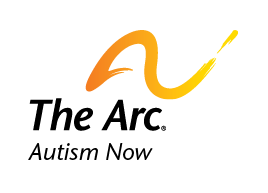An Introduction to Social Stories
By Amy Goodman
Co-Director, Autism NOW Center
Individuals with autism and other developmental disabilities may have trouble understanding social rules, and therefore may need some extra help learning them. The reason that individuals have trouble is because they may have never been explicitly taught the appropriate behavior or response to a social situation. Many people with autism or other developmental disabilities learn best by doing or by example. One good way to explain social situations or transitions to someone with a disability is to use a social story.
What is a Social Story?
Social stories were first introduced in 1991 by Carol Gray to help teach social skills to children on the autism spectrum. Since then, social stories have been used successfully with children, adolescents, and adults with autism spectrum disorders and other social or communication differences. Every social story is unique and designed for different people; however, a successful one helps an individual learn to navigate social situations with more ease than before.
A social story breaks down a social situation into a series of events or steps that should happen in order for an individual to accomplish the given task. These stories are written in simple, direct, everyday language and describe any situation or activity in which an individual has trouble understanding what to do or say. Some examples of social story topics include “What happens when we go on a vacation?,” “What do you do on an airplane?,” “What do you do at a hotel?,” and “What is Disneyland like?” The benefit to social stories is that they can be tailored to fit the unique needs and abilities of the individual using them. Stories can have as many or as few words, phrases, sentences, or pictures needed to explain what to do or how to do something.
While many social stories may be developed by family members or professionals, people with autism and other developmental disabilities can be included in creating social stories in various ways. The individual could participate in developing social stories by brainstorming the content of the story, drawing pictures for the story, and writing sentences to describe what is occurring in the story.
How to use a Social Story
Family members, professionals, and people with autism or other developmental disabilities can use social stories in many different ways and for numerous occasions.
- Social stories can be read to the individual, acted out through role playing, memorized, or repeatedly used as needed until the social situation has been mastered.
- Social stories can be used at any time or any place before, during, or after a social situation has arisen. Using a social story before an event can help explain what will happen and answer questions that a person with autism or other developmental disability may have. During an event, social stories can be used to assist a person in remembering what is expected or what should be done at a certain time or place. Even after an event, a social story could be used to explain what went wrong and what may need to change so that the situation is more successful the next time it occurs.
For more information on social stories, check out the following resources:
General Information:
- The Gray Center for Social Learning and Understanding
- University of New Mexico – Social Stories Module
Examples of Social Stories:
- The Gray Center for Social Learning and Understanding – Text for Social Concepts and Skills at School: Volume One (PDF)
- Autism Help – Social Story Examples (PDF)
- Technical Assistance Center on Social Emotional Intervention for Young Children (TACSEI) – Social Story Tips and Examples (PDF)
One thought on “An Introduction to Social Stories”
Leave a Reply
You must be logged in to post a comment.


Everybody is dancing, laughing, clapping… We are celebrating my son’s 20th birthday; as I see him dancing with his girlfriend..I stop and smile..We have come a long way; to think, that 4 years ago, my son David, turned from a sweet boy to an angry teenager..He would cry, scream, throw stuff around the house, kick and punch doors..He even started hurting himself. He would cry to me saying…”Mom, please help me..I have no friends..I’ll never have a girlfriend..I’m a disgrace”.. That would just rip me apart inside..He was frustrated and so was I. Things were getting out of hand and I didn’t know what to do……………………… One day,talking to the mother of one of David’s classmate; we decided to form a social club…and finally, things started to turn around………….Rosa threw a sweet sixteen party for her daughter; all the kids were so happy , getting ready for the big event…David didn’t have one outburst that week, which was a miracle for us…they ended up having a blast at the party… The following friday, I picked up 7 of David’s high functioning friends, and we went to ” hang out” at the movies, “like the regular kids” ( in the words of my son). This was the frist time they had ever gone to the movies, with friends, and they would not stop laughing and talking, just been the teenagers that they so deperately craved to be. Now , we go out every weekend… we go to movies, bowling, to the mall, we have pool parties, or birthday parties, like my son’s 20th birthdy party, where they danced all night ,at the beats of the DJ.
We need more programs, like this one, out there…yes, there are programs for them , when they are kids, but what about their social skills, their happiness??…Our teens with Autism, or down syndrome..need help; they get lonely, they want attention, they want friends.
our club is growing, we went from 7 to 27 teens. I am very proud of our club.I think of my “kids” like butterflies..that just got their wings.